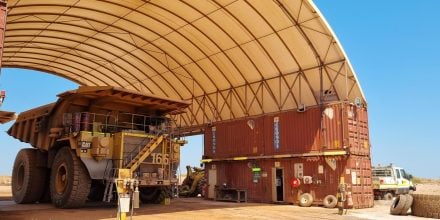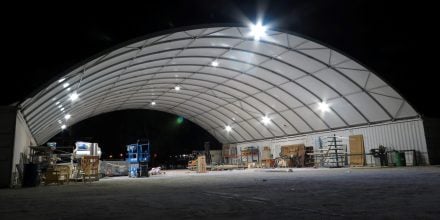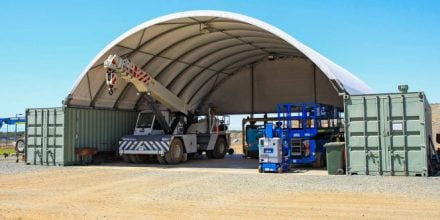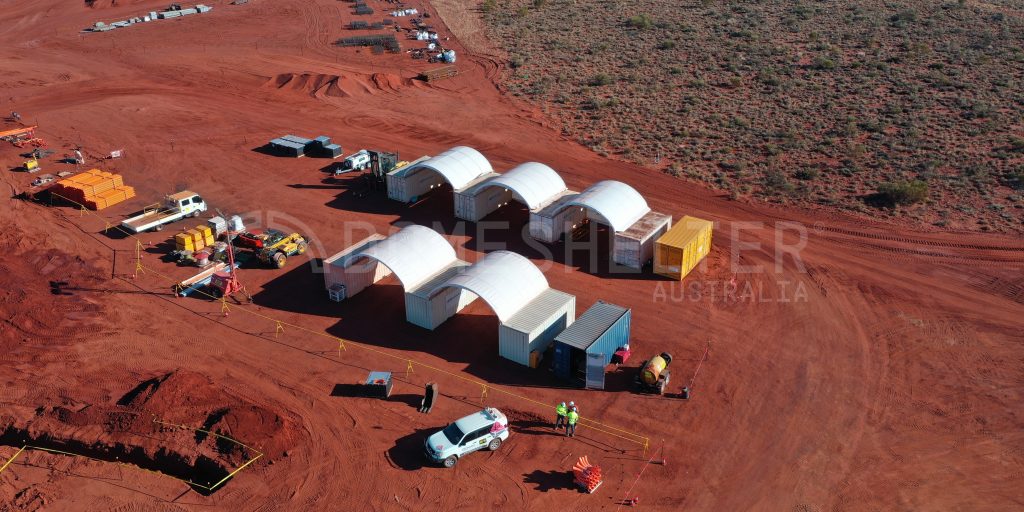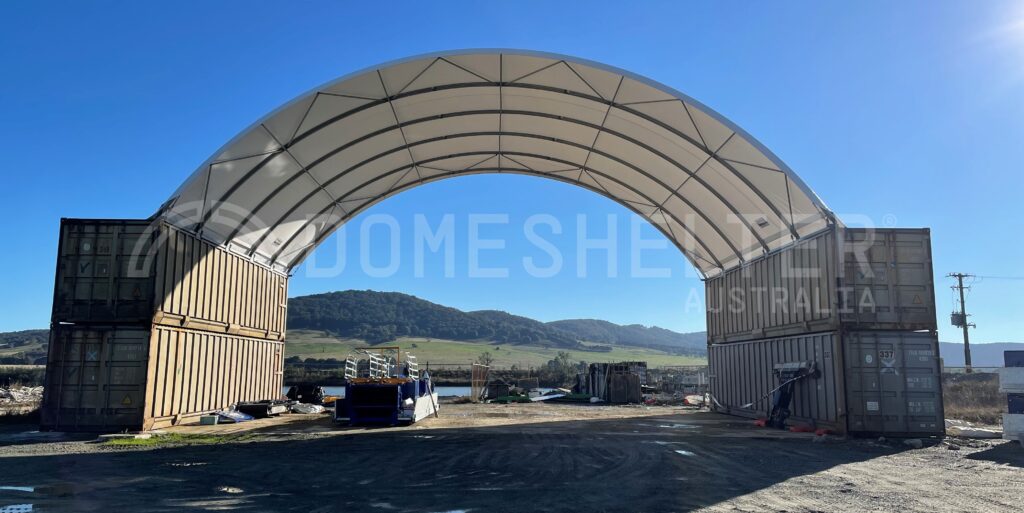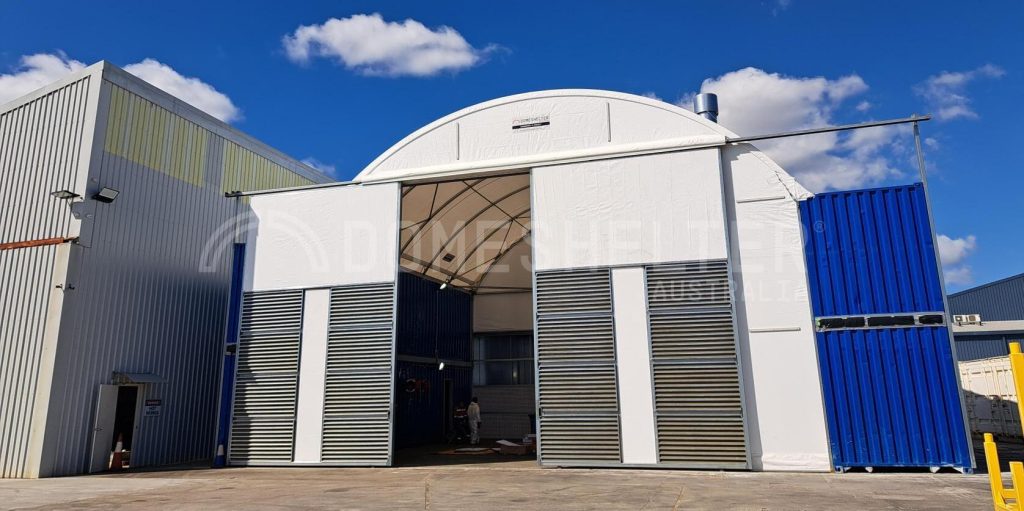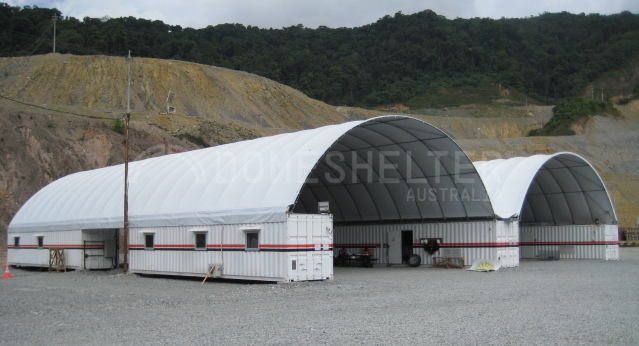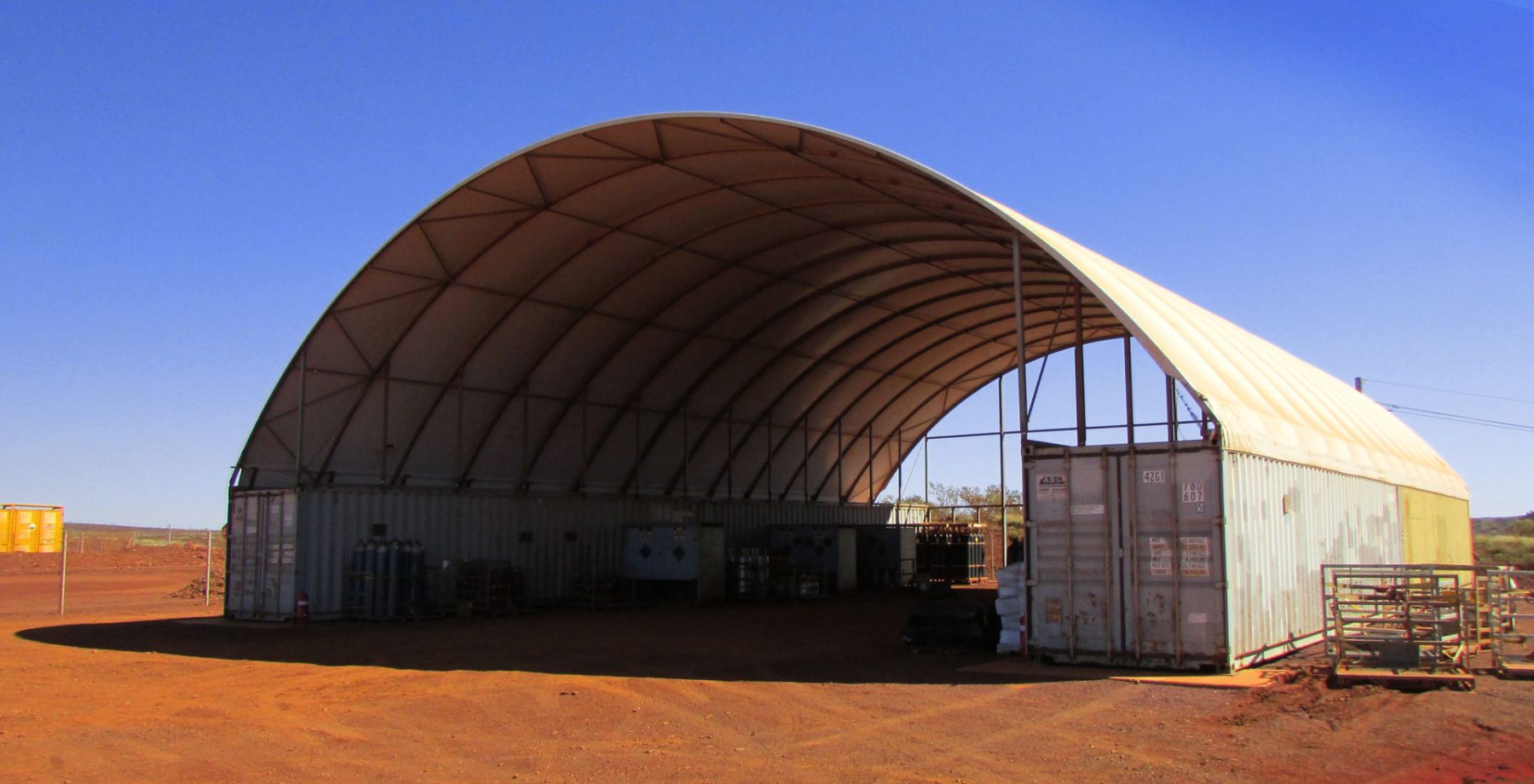
Shipping Container Shelters have revolutionised the concept of versatile and cost-effective protection across various industries. Also referred to as Container Mounted Fabric Shelters, these innovative infrastructure solutions offer many benefits, making them an increasingly popular choice for businesses.
This comprehensive guide discusses crucial considerations for selecting the right Shipping Container Shelter, explores some popular uses cases, and provides insights into configurations for securing and mounting.
Shipping Container Shelters: Versatile Protection
Container Mounted Fabric Shelters, also known as Shipping Container Shelters, are a popular option for a range of industries. They are an economical yet robust solution with considerable customisation potential.
The benefits of adopting a Shipping Container Shelter for your worksite include:
- Installation Speed: As opposed to traditional building construction methods, which can take months (or even years, with increasing labour shortages), Shipping Container Shelters are pre-fabricated and delivered to site in kit form, with comprehensive installation instructions and easy assembly that can be completed by the clients’ own team or 3rd party installers.
- Customisability: Most companies have varying needs when it comes to Shelter and storage facility specifications. Shipping Container Shelters are highly customisable, meaning they can effectively respond to any project needs. A wide range of size options are available, containers can be double or triple stacked to provide greater height clearance, Shelters can be daisy-chained together or attached lengthways to further enhance working space, and the list continues.
- Durability: Shipping Container Shelters are most often located in remote & challenging locations, exposed to a range of elements including harsh sun and strong winds. Quality Fabric Shelters will be engineered to the same standards as traditional building types, ensuring they are able to withstand the elements. A trusted supplier such as DomeShelter Australia will use a heavy-duty industrial-grade Fabric Tarp, with UV treatments that prevents the sun’s harsh rays from reaching occupants and assets within the Shelter, keeping them protected.
- Easy Relocation: When low-impact footings are employed, Shipping Container Shelters are easily relocatable. Many industries, especially mining, construction and industrial, involve limited work contracts with fixed end dates. For these clients, DomeShelter™ Container Mounted Structures are the smart investment, since they can be dismantled and moved between sites with minimal fuss, for improved ROI.
Considerations for Selecting a Shipping Container Shelter
Like any product, there are a range of Shipping Container Shelter options on the market. These can vary widely, with different options suiting different project constraints and requirements.
By knowing some basic information about points of difference when it comes to Shipping Container Shelters, clients can make informed decisions and ensure they select the right option for their needs.
- Delivery Method & Building Permits: Understanding the delivery method of your Shipping Container Shelter is crucial for a smooth installation process. Additionally, checking local building permits and regulations is essential to ensure compliance and avoid potential legal issues.
- Total Storage Capacity: Check the size/quantity of the assets requiring Shelter or identify the amount of workspace needed for staff, to make sure the Shelter you select will suffice. Storage space and organisation can be augmented using shelving systems, fitted-out containers, and other add-ons. Consultation with an experienced Shipping Container Shelter manufacturer can help you identify other ways to maximise storage capacity.
- Foundations and Hold Downs: A properly engineered Shipping Container Shelter requires the correct foundations and/or hold downs to be durable and stable. There are a wide range of securing options that can be employed, suiting different project needs. By adhering to the correct engineering standards and using the best securing option, Container Shelters can be built to withstand winds up to 316 k/hr.
- Engineering and Compilance: Ensuring that the chosen Shipping Container Shelter meets engineering standards and complies with relevant regulations is paramount. This includes factors such as wind loadings, structural integrity, and safety requirements. Work with a reputable manufacturer who can provide engineering certifications and ensure compliance with local building codes.
Shipping Container Shelter Uses
Bulk Storage and Warehousing
The first corrugated iron steel building, likely built on the London Docks around 1830 to handle incoming goods, marked the initial shift from traditional wooden barns to steel structures. However, in recent decades, shipping container shelters – characterised by large, obstruction-free spans and translucent roofs – have emerged as a disruptor for warehousing and bulk storage.
Take for instance the warehouse supplied by DomeShelter Australia to the Appleton Dockyards in Melbourne. At 1800m2, this structure was completed and ready to use in just 6 weeks. Manufactured in our Western Australian workshops and delivered to the Appleton Dockyards in kit form, it took just 10 days to install.
Installed on land not owned by the client, the Structure did not require any ground disturbance on the hard tarmac. It can also be dismantled and relocated with relative ease if required at the end of a contract or to meet changing work conditions.
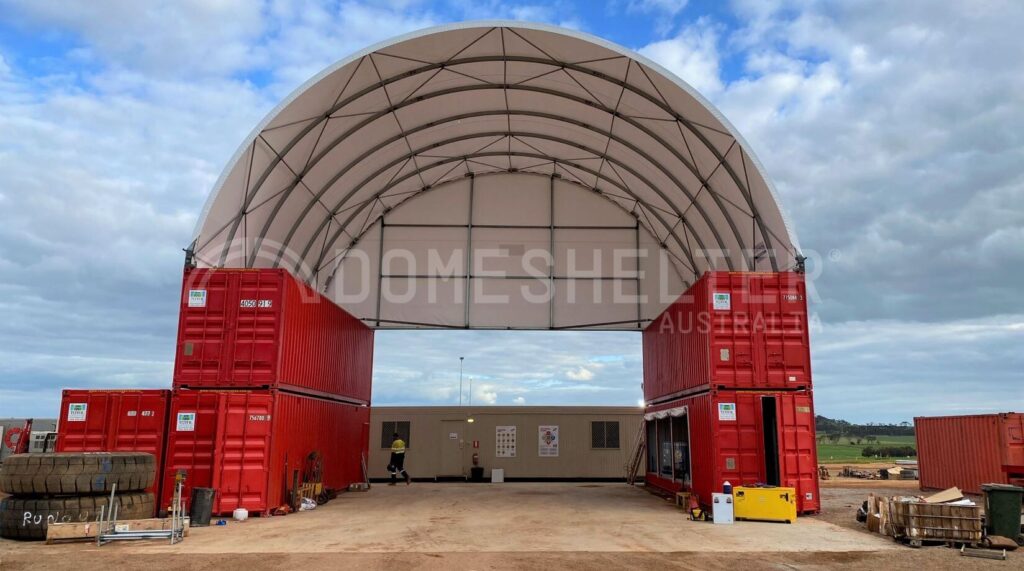
LV/HV Maintenance
Shipping Container Shelter are a common fixture on mine sites around Australia and the world. On these sites, contractors have time specific contracts and need Shelter Solutions installed fast to meet tight contract start-up deadlines.
The customisable nature of Shipping Container Shelters makes them perfect for Light Vehicle and Heavy Vehicle Maintenance Shelters, one of DomeShelter Australia’s most common applications. Containers can be stacked two or three high, or lengthways, to increase the size of the Shelter in order to accommodate any size machinery.
Shipping Container Shelters suit the fixed-date nature of mine site work, as well as aiding easier site rehabilitation with low-impact footings, while still keeping staff and assets protected from the elements and withstanding harsh weather conditions.
Paint & Blast
Shipping Container Shelters are perfectly suited for all paint and blast applications. They can easily be fully enclosed with the help of Endwalls, achieving total containment for works, yet with significantly reduced lead times compared to traditional steel structures.
Achieving steeper height clearance to accommodate larger machinery and equipment is also often easier and more cost effective with a Fabric Shelter compared to steel buildings.
Ventilation can be improved and aided through louvres or built-in ventilation systems and vacuums, to ensure the safety and comfort of occupants.
Shipping Container Shelter Configurations
- Securing: There are several securing options available for Shipping Container Shelters, depending on size and the wind region it is installed in. Whilst in-ground concrete footings can be used, alternatives include hulk earth anchors, above ground concrete blocks with straps, and soil ballast loaded directly into the container. Experienced DomeShelter™ Consultants are available to make recommendations and ensure a solution that meets the needs of every client.
- Mounting: Sea Containers provide for a range of configurations that account for height and length required and the Shelter’s use. Options include the roof structure mounted:
-
- On the inside edge of both containers;
- On the inside edge of one container and the outside edge of the other; or
- On the outside edge of both containers.
Different mounting rails are also available to suit a range of project needs.
- Add-Ons & Extras: Add-ons and extras enhance their functionality of Shipping Container Shelters and helps to meet specific project requirements. Common add-ons include personnel doors for easy access, roller or sliding doors for entry and exit of vehicles, portable flooring, lighting, and fitted-out containers for better use of space. An experienced Fabric Shelter supplier will be able to walk you through add-ons for your Container Shelter project.
Explore Our 3D Design Tool
Shipping Container Shelters are a popular, modern infrastructure solution for a range of industries. With key benefits that differentiate them from traditional building types, as well as configuration options and customisations to suit any application, they are the ideal Shelter choice for both temporary and permanent infrastructure needs.
To learn more about Shipping Container Shelters and explore configurations, you can utilise the free 3D Design tool on DomeShelter Australia’s website and create your own 3D Shelter design.




